 Mysteries
Mysteries  Mysteries
Mysteries  History
History 10 Surprising Stories About the Texas Rangers
 Humans
Humans 10 Philosophers Who Were Driven Mad by Their Own Theories
 Miscellaneous
Miscellaneous 10 Video-Game-Worthy Weapons and Armors from History
 Weird Stuff
Weird Stuff 10 Psychics Who Accurately Predicted Wartime Events
 The Arts
The Arts 10 Pieces of Art Inspired by a Broken Heart
 Health
Health 10 Science Fiction-Sounding New Medical Treatments
 History
History 10 Surprising Facts About the Father of Submarine Warfare
 Space
Space Ten Astonishing New Insights into Alien Worlds
 Weird Stuff
Weird Stuff 10 Bizarre Summer Solstice Rituals Still Practiced Today
 Mysteries
Mysteries Top 10 Haunting Facts About the Ghost Ship MV Alta
 History
History 10 Surprising Stories About the Texas Rangers
 Humans
Humans 10 Philosophers Who Were Driven Mad by Their Own Theories
Who's Behind Listverse?

Jamie Frater
Head Editor
Jamie founded Listverse due to an insatiable desire to share fascinating, obscure, and bizarre facts. He has been a guest speaker on numerous national radio and television stations and is a five time published author.
More About Us Miscellaneous
Miscellaneous 10 Video-Game-Worthy Weapons and Armors from History
 Weird Stuff
Weird Stuff 10 Psychics Who Accurately Predicted Wartime Events
 The Arts
The Arts 10 Pieces of Art Inspired by a Broken Heart
 Health
Health 10 Science Fiction-Sounding New Medical Treatments
 History
History 10 Surprising Facts About the Father of Submarine Warfare
 Space
Space Ten Astonishing New Insights into Alien Worlds
 Weird Stuff
Weird Stuff 10 Bizarre Summer Solstice Rituals Still Practiced Today
10 Controversial Debates About Food and Cooking
A very large percentage of the population has to be able to cook at least a little bit to survive. Since humans tend to be a proud lot, we’re all often pretty convinced of our own ideas and ways of doing things. Of course, other people are just as sure of their methods.
Since so many of us cook, there are a lot of people with very strong opinions about cooking, food safety, and what constitutes proper techniques and proper respect for food. Be sure to let us know in the comments how you feel about the following debates about the right way to cook and eat.
10 Is It Generally Safe to Lick the Beaters or Not?
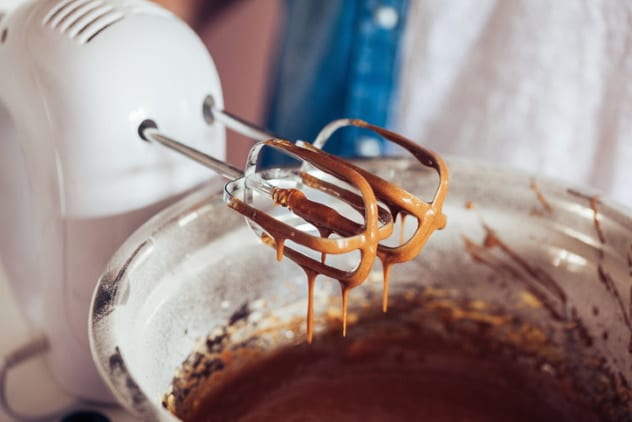
One of the most enduring questions of the modern food age is whether it is okay to lick the beaters, eat raw cookie dough, or even swallow raw eggs whole—although these last people are thankfully a small minority. Some people are simply entirely against any kind of licking of beaters or the like, and others feel it builds up the immune system and that the overall risk is rather small.
Those against it would argue that you are needlessly risking getting salmonella and that really any risk is too great, especially when the safety of your kids is involved.[1] However, most people, unless they already have a compromised immune system, survive salmonella without any further complications than getting really sick for a bit, so critics of this argument would opine that the risk is extremely low. They would say there is no good reason not to lick the beaters. There are a lot of other things more likely to kill you in their eyes.
9 Is It Really Mandatory to Salt Your Pasta Water?
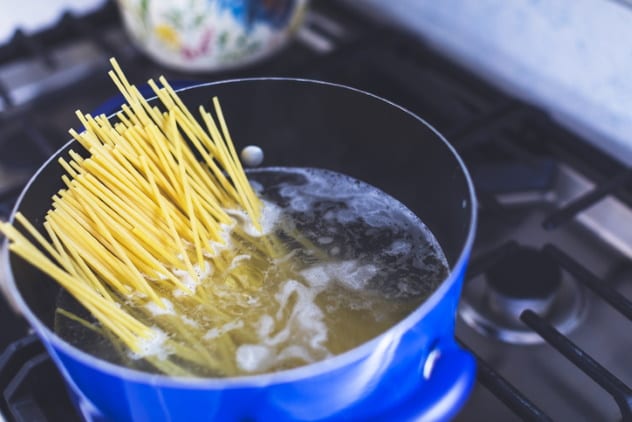
Many culinary schools today teach people to salt their pasta water as a matter of good habit, as you cannot add flavor to the inside of the pasta later. As a result, there are a lot of chefs and food critics alike who simply think it is mandatory. On the other hand, many feel that it isn’t really necessary in certain situations.
Of course, the main argument of those who believe salting is mandatory is, as we said, that you cannot add flavor to the pasta later, and this does have a certain amount of weight to it when you consider dishes like spaghetti, which is often served without being immersed entirely in the sauce. However, the non-salters would argue that in many pasta dishes, the pasta is entirely coated in the sauce. If you use the right type of pasta for the right type of sauce, it should be so well-coated and stick so properly that you shouldn’t notice whether the pasta was salted. There are also those who need a more low-sodium diet for health reasons and prefer to control the level of salt by adding small amounts to their sauce later as needed.[2]
8 Does Eating Charred Food Increase the Risk of Cancer?
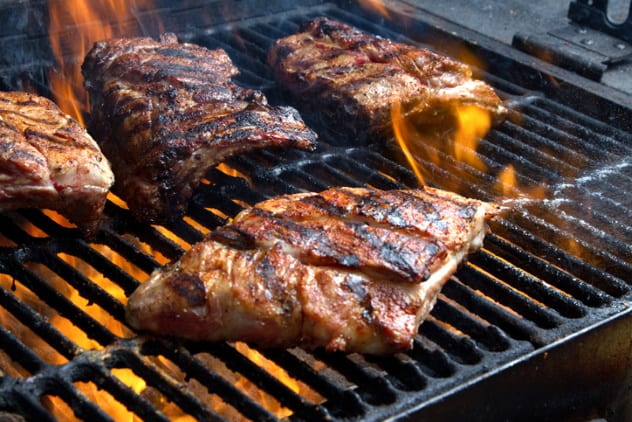
This is a question sure to bring up arguments between many food lovers, and it’s still being disputed. Some people claim that scientific studies show that eating a lot of charred or blackened food actually increases your risk of getting cancer—the studies cited usually are done on rats or other such creatures. On the other hand, the apologists for eating somewhat blackened or charred food argue that the studies done have been mostly inconclusive and sometimes contradictory, especially when it comes to humans. While there is some suggestion of a possible link, there is no definitive evidence that eating charred meat from the grill comes with an increased risk of cancer.
The whole controversy is partly because when food is cooked at a high enough temperature, a chemical called acrylamide is created. There is reason to believe that when used in an industrial setting, it can indeed cause an increased chance of getting cancer. However, acrylamide can turn up in any food cooked at a hot temperature, not just blackened meat. Despite a lot of tests, scientists cannot find a link between acrylamide and cancer when it is consumed through food products that were cooked at a high temperature.[3] They haven’t entirely ruled out the possibility of a risk, but they have been unable to find one, either. A few other chemicals that can appear specifically in meat cooked a long time on the grill, but the only time they showed a cancer link in tested animals was in an amount far higher than we would get simply from eating meat.
7 Does Gluten “Intolerance” Really Exist?

Being celiac is relatively rare, but many (especially in the U.S.) are now going gluten-free simply due to “gluten sensitivity,” something that doctors have been unable to find proof of.[4] The fact is that many scientists believe a lot of these people complaining about stomach and bowel problems, who have this alleged “intolerance,” are probably just confusing what is going wrong and most likely have irritable bowel syndrome or something similar. And the truth is, much of this is because of diet.
Many Americans have a diet full of white bread and pasta that mostly metabolize as sugar and give them very little real fiber. People might feel a little better taking this stuff out of their diet at first because it isn’t good for them, but if they don’t replace it with proper grains, they may just end up with an even lower-fiber diet and even more bowel problems. The real truth is that most Americans could probably just use a lot more whole grains and fiber in general, not a gluten-free diet.
6 Basically Everything About Veganism and Vegetarianism Versus Omnivorism

One of the biggest debates today is between vegans, vegetarians, and omnivores. Despite being roughly one percent of the population, vegans have become highly represented in popular culture. They will often extol the virtues of veganism to anyone who will listen long enough or any kind of captive audience. This has caused a lot of pushback because some people who are simply vegetarians or omnivores feel that the vegans are trying to permanently take away their access to dairy and/or meat.
Vegans and some vegetarians argue that long, long ago, humans were not evolved to the point where we could properly digest meat, so therefore we shouldn’t now. Omnivores argue that evolution made us omnivores a long time ago, so it makes perfect sense to eat meat now. Vegetarians have to deal with the purist vegans who think the former don’t go far enough, as well as the meat-eaters who try to get them to break their diets. In the meantime, vegans argue against cruel use of animals, but they love zoos, which forcefully keep animals in captivity (something PETA is officially against), and they do not protest against the countless rodents that get crushed by farming machines every year while harvesting their precious vegetables. Meat-eaters, on the other hand, argue that they are not hurting anyone by eating meat but don’t like to think about how big of a contributor to greenhouse gases cows tend to be.[5]
5 What Should You Put on Top of Your Hot Dog?

Hot dog toppings vary from region to region. Not only do people have strong opinions about what should be placed on a hot dog, but the placement of the various toppings also causes much debate. Apparently, you’re supposed to avoid dressing the bun as opposed to the top of the dog. So, no condiments directly on the bun. Now that we have that solved, what should go on top? Some favorite toppings include mustard, onions, relish, and sauerkraut. But what about ketchup?[6]
If you ask people in Chicago, they will tell you that you should never put ketchup on a hot dog. The typical Chicago-style dog comes with yellow mustard, green relish, chopped onion, a dill pickle spear, sport peppers, tomato, and celery salt. But ketchup? No way!. In 2017, Heinz tried to market ketchup as “Chicago dog sauce” to Windy City residents, who were not buying it. However, sports stadiums in Chicago still do have the condiment on hand if you’re willing to weather some judgemental side-eye while dressing your dog. You also won’t find ketchup on traditional New York-style dogs, which are usually topped with sauerkraut and mustard, in the German style.
So, I guess that slathering the bun with mayonnaise and ketchup is a big no-no. Yikes, I’ve been doing it wrong all these years!
4 Is It Impolite or Uncultured to Order Well-Done Steaks? What About Putting on Ketchup or Other Sauce?
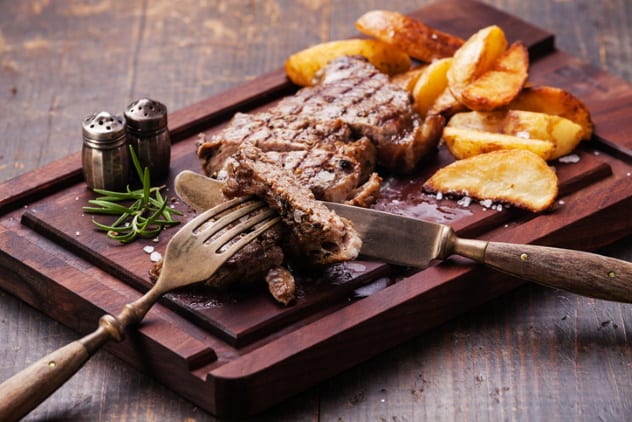
For some reason, steak has become one of the most elitist foods (probably because it is relatively more expensive than most proteins to eat an entire steak). It thus comes with all kinds of rules of etiquette attached. Many chefs and other “experts” will tell you that if you order your steak well-done, you are doing it very, very wrong: There needs to be at least a little juicy redness to get the proper flavor. And while this will always be a contentious debate, the argument that tends to get people riled up even more is whether you should be allowed to put sauce on your steak, especially at a fancy steakhouse.[7]
Some steakhouses are so proud of their own quality, and feel so insulted by people who want to put sauce on their steaks, that they won’t even supply things like A1 or ketchup. As far as they’re concerned, this just shouldn’t be necessary for a truly good steak. Those who use sauces argue that they can enjoy the flavor of the steak while making it even better with the sauce and that they aren’t “drowning the taste of good food,” as some insulted chefs tend to feel about the issue.
3 Is It Cannibalism for a Woman to Eat Her Placenta? What If She Serves It to Her Friends?

The placenta is an organ that develops in the uterus during pregnancy and brings nourishment to the fetus. In many animal species, this part is eaten by the mother after the pregnancy, and there are a lot of good reasons for this. Food can sometimes be scarce for animals, and after a pregnancy, a lot of energy would obviously be needed. It also helps remove the scent from the air, as the placenta may attract potentially unwanted attention to the new babies. However, recently, some women have started eating the placenta after birth as some kind of “health” thing, and this has led a lot of people to question whether this amounts to cannibalism or not.
The controversy reached a wider audience when Kourtney and Kim Kardashian were not getting the support they wanted from their family. They said they would likely eat their own placenta after giving birth, so they hatched a prank. On Keeping Up With The Kardashians,they fed their family mystery meat, only telling them it was placenta after the fact.[8] After hearing all of the family’s grossed-out reactions, they admitted it was just brisket. This leads to the question of when and how eating a placenta is cannibalism. Is it okay for the mother (even if the health benefits are dubious) because it is from her own body? Would actually feeding placenta to others whose body it is not from cross the line into full-on cannibalism?
2 Is It Ever Okay to Put Pineapple on Pizza?
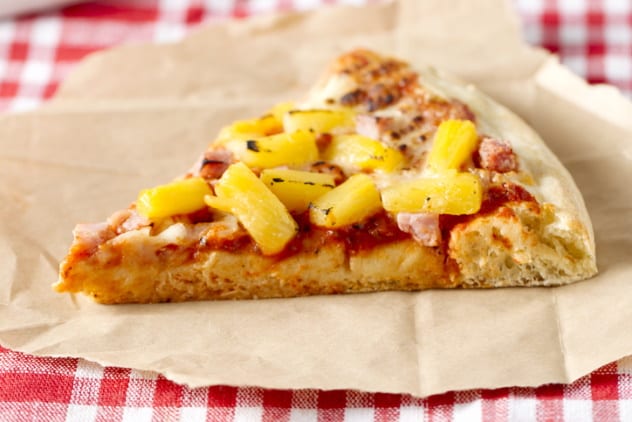
While it has always been a contentious issue, it probably reached its highest point of absurdity when the president of Iceland joked in 2018 that it should be illegal to put pineapple on pizza.[9] Some people initially took him semiseriously, and this shows just how seriously people take their pizza, not to mention how offended people get at certain combinations of sweet and savory. Now, those who defend pineapple on pizza would argue that when cooked, pineapple becomes slightly less sweet, and there’s absolutely nothing wrong with savory and sweet combinations, anyway. Those against it argue that anything sweet or fruity should be right out and that it’s just an abomination in general when it comes to good pizza.
However, these people also tend to be the types who mostly order sausage and pepperoni and would have a minor heart attack if someone tried to give them a deluxe pizza with onions, olives, and other stuff in the mix. While this debate will never really die, we can probably all agree that most cultures find pizzas made with peas and mayonnaise to be a bit too much, even for such a versatile food, and even pineapple lovers can agree on that one.
1 What Exactly Is American Food?
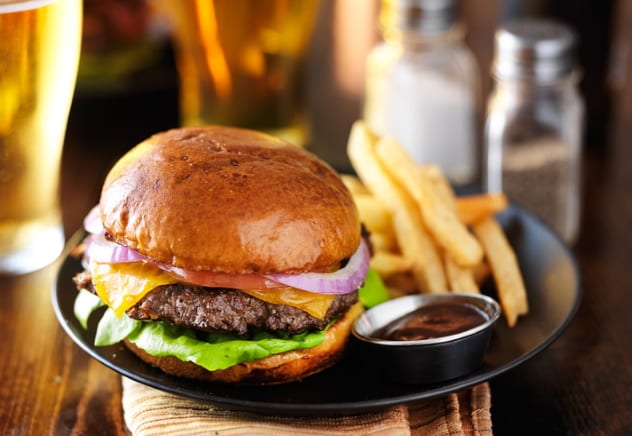
One thing that is often surprising to Americans who travel abroad is “American-style” restaurants, which is really funny because some people in Europe, and even in the United States, argue that the U.S. doesn’t really have its own food culture at all. “American restaurants” in other countries will probably feature a menu of mostly cheeseburgers, pizza, french fries, hot dogs, and maybe fried chicken. Many people, especially Italians, will argue that even the most traditional American foods aren’t really “American,” as they all started somewhere else, such as pizza. However, Americans would argue that Italy makes pizza a different way, so the U.S. version is unique. Also, hamburgers and hot dogs may have some cultural origins from outside the U.S., but the way Americans do them is entirely their own.
Some Americans would argue that because of the melting pot, their food is a lot of different cultures’ foods, modified to fit the fast-paced American lifestyle. Some would take it farther and point out that the U.S. is very big and has 50 states, some with their own regional ways of doing things. So apart from some mass-produced favorites, many unique regional dishes were entirely dreamed up within the United States. For example, American barbecue and all the great sauces involved were designed by enslaved black pitmasters back in the colonial days and perfected by the same over the years.[10] Of course, this is just one small region within the U.S., and many others have their own unique food. Which still leaves the question: What exactly is “American food?”
Read about some more food-related disputes and kerfuffles on 10 Incredibly Curious Food Lawsuits and Top 10 Disastrously Distasteful And Bizarre Food Vendors.








